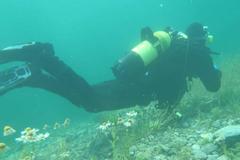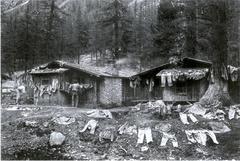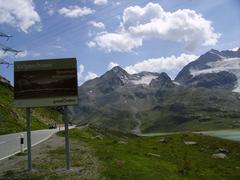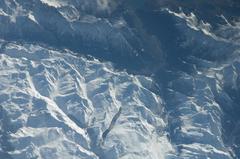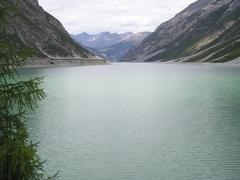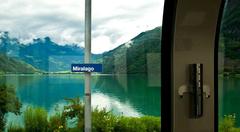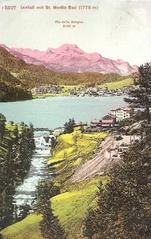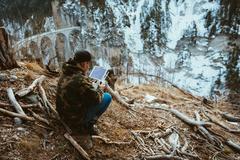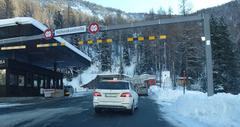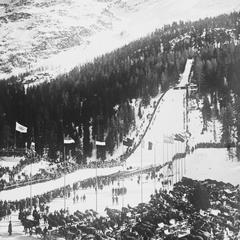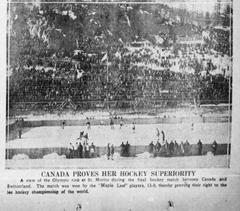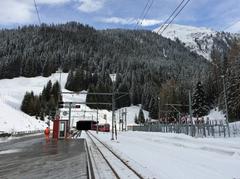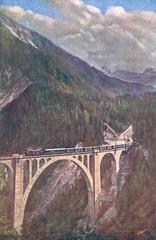
Lai da Marmorera Visiting Hours, Tickets, and Travel Guide
Date: 15/06/2025
Introduction
Lai da Marmorera, located in the picturesque Surses valley of Switzerland’s Canton of the Grisons (Graubünden), is a unique alpine reservoir that blends history, culture, and natural splendor. Formed in 1954 by the construction of the Marmorera Dam, it submerged the original village of Marmorera, creating a poignant milestone in Swiss hydroelectric development. Today, Lai da Marmorera is a destination where visitors can experience outdoor activities, explore ecological diversity, and connect with a rich local heritage. The site lies within Parc Ela, Switzerland’s largest regional nature park, and exemplifies sustainable tourism and environmental stewardship (Wikipedia, Surses Tourism Board, Parc Ela).
This guide details Lai da Marmorera’s history, practical visiting information, and recommended activities, drawing on authoritative resources to help you make the most of your visit.
Table of Contents
- Historical Overview
- Planning Your Visit
- Activities and Attractions
- FAQs
- Summary and Final Tips
- Sources and Further Reading
Historical Overview
Early Settlement and Strategic Location
The area now occupied by Lai da Marmorera has been inhabited for centuries due to its strategic position along the Julier Pass—a crucial route linking the Engadin valley and central Graubünden. This crossing brought together Romansh, German, and Italian influences, shaping the local architecture, language, and traditions (Wikipedia). Before the dam, the village of Marmorera thrived on agriculture and small-scale trade, with the region’s medieval past still visible in nearby castle ruins.
The Submerged Village: Marmorera’s Transformation
In the 1950s, Switzerland’s growing electricity needs led to plans for a hydroelectric dam that would submerge Marmorera. The villagers, after much debate and a democratic vote, chose to relocate in exchange for economic security and compensation (National Museum Blog). The construction of the dam and reservoir in 1954 erased the original village from the landscape. A new village was built on higher ground, designed to maintain community connections despite architectural changes (Schweizersee).
Hydroelectric Development and Regional Impact
The Marmorera Dam, at 91 meters high and 280 meters long, created a reservoir of 1.41 km² at an elevation of 1,680 meters, primarily fed by the Julia River. It plays a vital role in regional hydroelectric power and water management, supporting Zurich’s energy needs and contributing to local economic development (swissglorious.com).
Planning Your Visit
Visiting Hours & Seasonal Access
Lai da Marmorera and its surrounding trails are open year-round. Peak visitor hours are typically 8:00 AM to 6:00 PM during spring through autumn, when trails are clear and water activities are accessible. In winter, snow may limit trail access, but opportunities for snowshoeing and cross-country skiing remain.
Tickets & Guided Tours
There is no entrance fee to visit the reservoir or its trails. Diving to explore the submerged village requires a permit and must be coordinated with local diving groups. Guided tours, available seasonally through Parc Ela or local tourism offices, offer deeper insights into the lake’s history, ecology, and the story of the submerged village. Tickets for these experiences should be booked in advance (Graubünden Tourism).
Accessibility & Travel Tips
Lai da Marmorera is accessible via the Julier Pass road (Route 3). Public buses operate from Chur, Savognin, and Bivio, making the site reachable without a private vehicle. The main lakeside path is relatively flat and family-friendly, while some routes may be challenging for those with limited mobility. Sturdy footwear and weather-appropriate clothing are recommended year-round.
Facilities and Amenities
Amenities in the rebuilt village include small hotels, guesthouses, restaurants, and information centers providing maps and weather updates. Facilities at the lake itself are limited, so visitors should bring supplies, especially in winter.
Activities and Attractions
Outdoor Recreation
Hiking and Walking
A network of well-marked trails surrounds Lai da Marmorera, suitable for all ages and fitness levels. Highlights include:
- Lakeside Loop (5.9 km): An easy circuit ideal for families (Komoot).
- Alp Flix Trail: A longer hike to a high plateau with panoramic views and rich biodiversity.
Cycling and Mountain Biking
Smooth roads and trails connect the lake with nearby villages. Cycling options range from easy rides to more demanding alpine routes.
Water-Based Activities
Swimming is possible in summer, though the water remains cold. Fishing is allowed with a license, and the clear waters are home to trout and other species.
Winter Sports
Nearby Bivio provides ski slopes, cross-country trails, and snowshoeing. In suitable conditions, the frozen lake offers opportunities for winter walks and ice skating.
Cultural and Historical Highlights
Submerged Village and Historical Memory
The story of the original Marmorera is remembered through local exhibitions, commemorations, and the Swiss film “Marmorera” (2007), which explores the emotional impact of the village’s submergence (Wikipedia). During periods of low water, remnants of the old village may be visible.
Traditional Villages
Nearby Sur and Bivio offer authentic alpine architecture, trilingual culture (Romansh, German, Italian), and local cuisine. Sur’s Romanesque church and Bivio’s seasonal festivals provide further cultural immersion.
Nearby Destinations
- Parc Ela Visitor Center: Learn about the area’s ecological and cultural significance (Parc Ela).
- Savognin: A nearby village with restaurants, shops, and winter sports.
- Julier Pass: A scenic alpine drive/hike with sweeping views.
FAQs
Q: What are Lai da Marmorera’s visiting hours?
A: Open year-round; trails and outdoor areas are accessible at all times. Museums and visitor centers generally open from 9:00 AM to 5:00 PM, Tuesday to Sunday.
Q: Are tickets required?
A: No tickets are needed for general access. Guided tours and diving require advance booking and permits.
Q: How do I get there?
A: By car via Route 3 (Julier Pass), or by bus from Chur, Savognin, or Bivio.
Q: Is it accessible for people with limited mobility?
A: The main lakeside trail is relatively flat and suitable for wheelchairs and strollers in dry conditions.
Q: When is the best time to visit?
A: Late spring through early autumn is ideal for hiking and water activities; winter is best for snow sports.
Q: Can I swim or fish in the lake?
A: Yes, swimming is popular in summer. Fishing is allowed with a valid license.
Summary and Final Tips
Lai da Marmorera offers a unique intersection of natural beauty, cultural heritage, and modern engineering. Whether you are exploring the trails, photographing alpine vistas, or reflecting on the submerged village’s legacy, the site invites a deep connection to Switzerland’s alpine landscape. Its position within Parc Ela ensures a commitment to conservation and sustainable tourism.
Travel Tips:
- Check local weather and trail conditions before visiting.
- Bring supplies, especially outside village areas.
- Respect local customs and environmental guidelines.
- For guided tours and updated visitor information, consult the Parc Ela official site or Graubünden Tourism.
Enhance your visit with the Audiala app for maps, audio tours, and insider tips. Share your experience on social media with #VisitLaiDaMarmorera.
